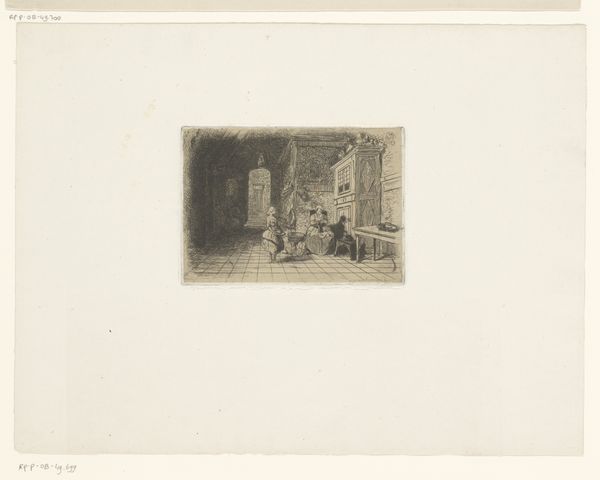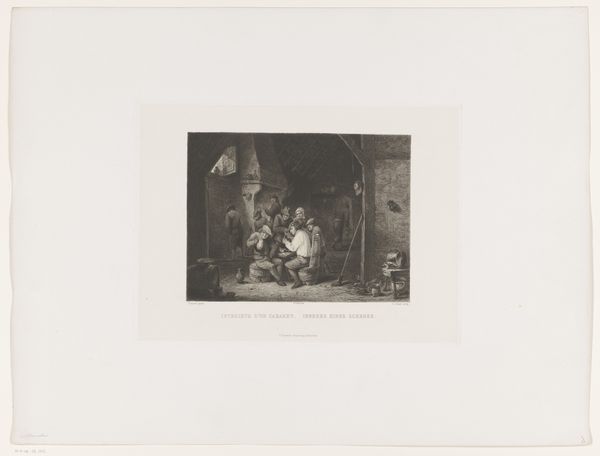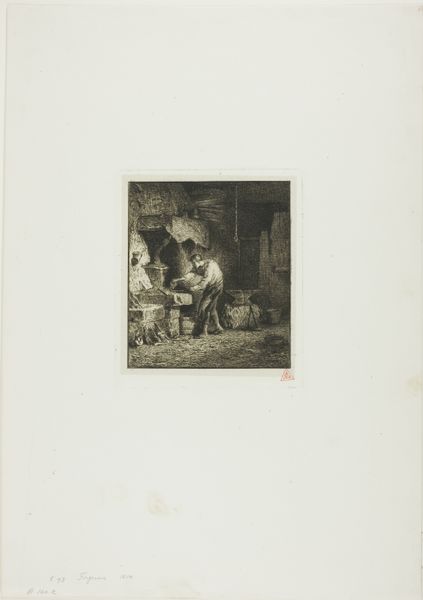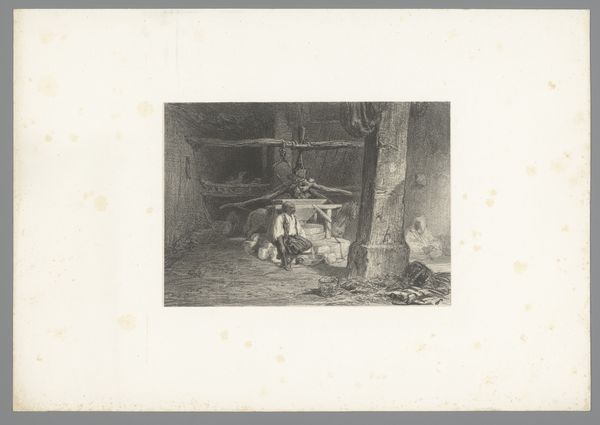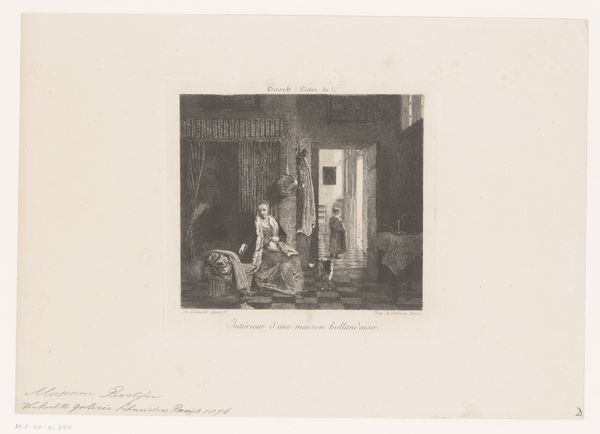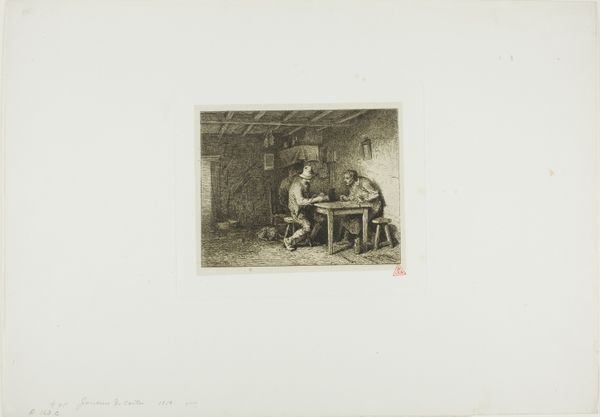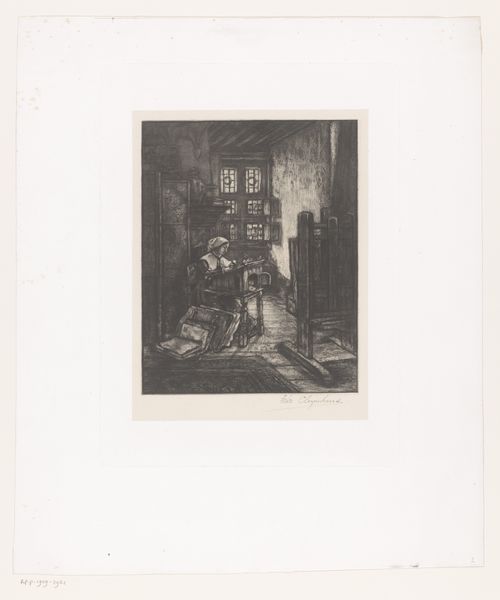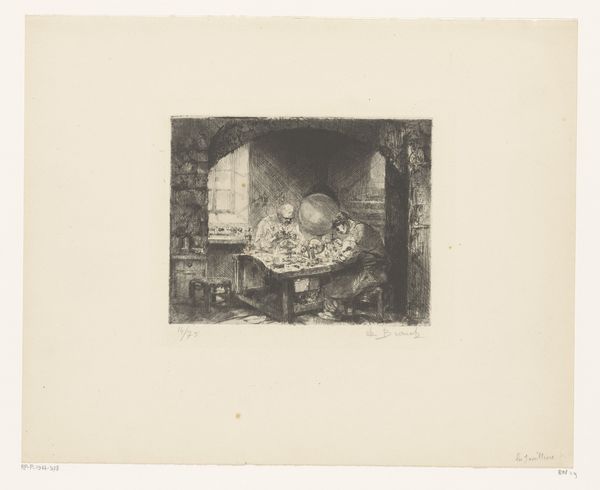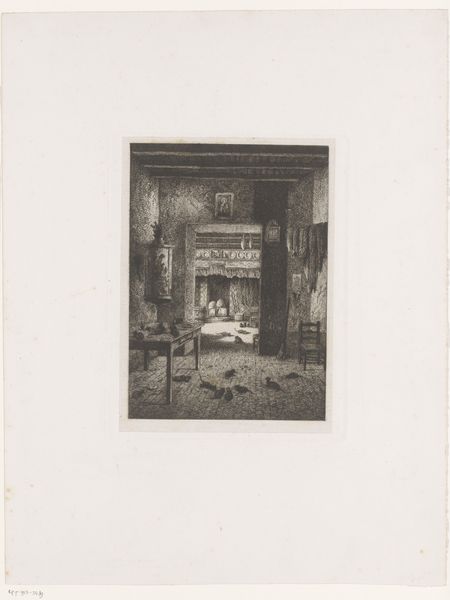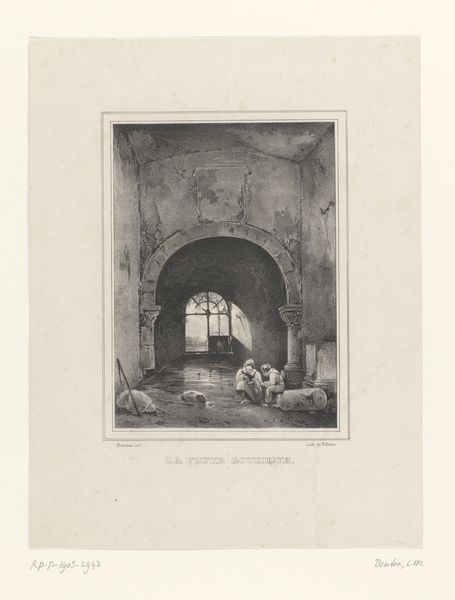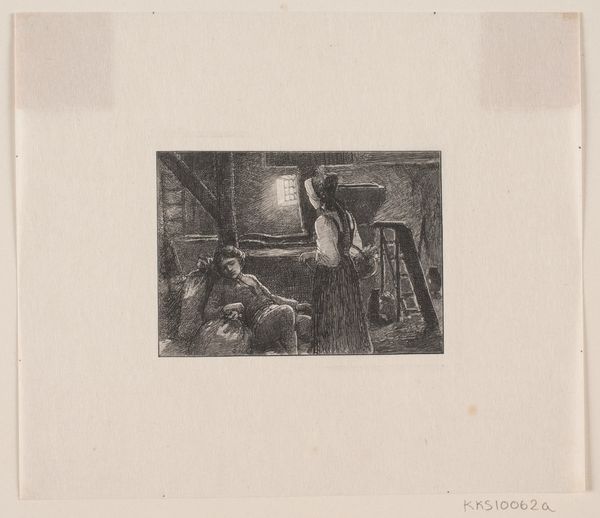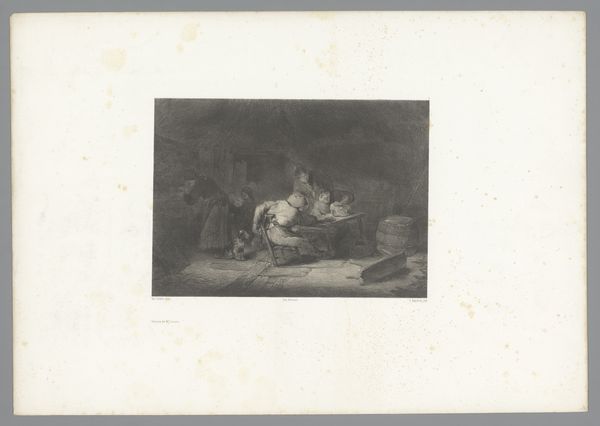
drawing, print, etching, paper, ink
#
drawing
# print
#
etching
#
paper
#
ink
#
genre-painting
#
realism
Dimensions: height 118 mm, width 156 mm
Copyright: Rijks Museum: Open Domain
Piet Verhaert made this etching called 'Werkplaats' or 'Workshop' in 1871. It depicts a figure working in what appears to be a humble, perhaps even impoverished, workshop. Verhaert lived and worked in Belgium, which at this time was undergoing rapid industrialization and modernization, but also significant social inequality. Consider how the artist has chosen to represent the worker and his environment. The interior is dark and cramped, with little natural light. This contrasts with the art institutions of the time, which were usually well-lit and spacious. Is this a conscious critique of the art world's detachment from the realities of working-class life? By examining social documents, economic statistics, and even literature from the time, we can better understand how Verhaert's etching engages with, or challenges, the dominant social and artistic norms of his era. The meaning of art is always contingent on such context.
Comments
No comments
Be the first to comment and join the conversation on the ultimate creative platform.
